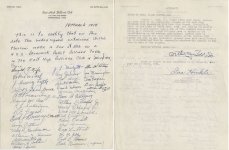I love this conversation. I wasn't around to see it so it's a gift to have you guys on the forum!
One of my favorite pool books is Mastering Pool by George Fels. In his section about break shots he highlights the two head balls and two corner balls and states those are the safe targets to try to contact. He warns to stay away from the middle of the rack as you will likely get trapped on the stack. He was also a dedicated proponent of the strategy of opening up 4-6 balls with control. He felt that a top player was better off taking less chances with losing control of the shot, and that if they played to get the cue ball free they would undoubtedly have secondary break shots to open the remaining balls (most of the time with just a small nudge as he wasn't looking to spread them across the table like an 8 ball break, but only enough so they each had an open pocket when other loose balls were cleared).
I've played a bit of straight pool and have had more success breaking them hard. Maybe that's the equipment, maybe that's my lack of proficiency at the game that dictates I am better off taking my chances. But in watching players today that certainly seems to be the standard.
In any case, I support what JS is doing. I don't think it belittles what Mosconi did in any way, and I don't hear him saying that running a 550 would prove him to be a better straight pool player. What I see is a great pool player trying to play his best pool and achieve a meaningful goal he set out for himself. One that comes with a financial incentive, creates interest in pool, and would be fun for many players to be able to see on video. I think it's perfectly alright to honor Willie's legendary dominance and root JS on. They aren't competing against each other. They are each on their own journey and I am all for each individual to do their respective best.
Tap Tap Tap!
